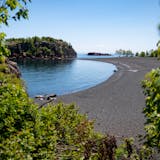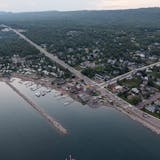You may have read the news announcing a plan to build an enormous oriented strand board manufacturing facility in Cohasset, Minn. ("Environmental analysis updated for wood plant," Jan. 27.) At first glance, the project might sound pretty good. More jobs and building materials in our region. But the proposed site is one mile from our reservation in the area protected by treaty rights, so we are taking a closer look at the project proposal.
What kind of neighbor will this be?
A neighbor who starts by cutting down eagle nests and putting them into a woodchipper. We were surprised when we read about the plan to destroy bald eagle nests in the environmental assessment prepared by Huber Engineered Woods. Although bald eagles are protected by federal law and sacred to Ojibwe people, Huber wants to destroy eagle nests when they could easily avoid them.
The nests illustrate larger problems. The proposed site is 400 acres of forested wetlands on the bank of a portion of the Mississippi River that holds hundreds of acres of wild rice. Huber is seeking a permit from the Army Corps to drain and fill wetlands. Wetlands are critical to many species of fish and wildlife, for food production, spawning and nursery habitat, refuge and the reduction of harmful pollutants in water. Wetlands along the Mississippi River also store stormwater and reduce flooding downstream.
The proposed site is owned by Minnesota Power, which is the steward of a great deal of sensitive wetland habitat. These wetlands were set aside for a water-dependent public utility and should not be offered to recruit industrial customers.
Acid rain and air quality are also significant troubles. The Boswell coal plant is currently emitting 647 tons of sulfur dioxide annually, or about two tons per day. The Huber plant would be on the same site, emitting 528 tons of nitrous oxides and other pollutants.
Sulfur dioxide and nitrous oxides interact to form acid rain that can travel long distances and wash out in local rain events. Acid rain damages vegetation, particularly conifers, and changes the acidity in soil to cause nutrient leaching. In water bodies it allows mercury to change into methylmercury, increasing mercury in fish and waterfowl. The Boswell plant has been emitting thousands of pounds of mercury for decades. Huber's air emissions would combine with Boswell's and harm everyone in our region.
Finally, the scale of air pollution hints at our biggest concern. The Huber plant would be enormous — the size of the old Metrodome. Truly a Mega Mill, it would consume far more timber than our region can sustain with significant negative effects on wildlife and treaty fisheries.


